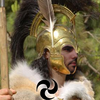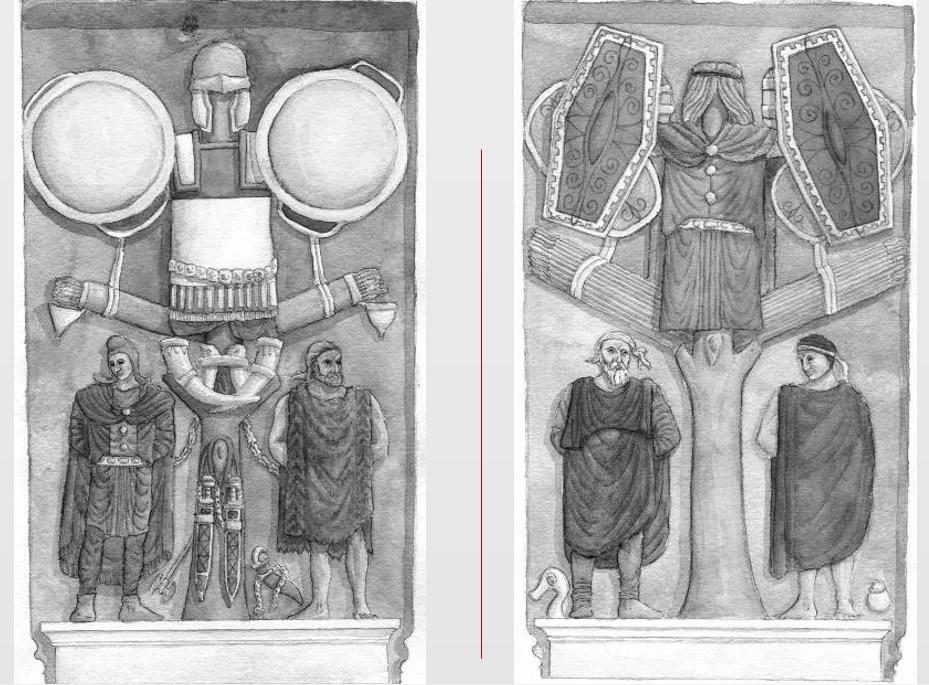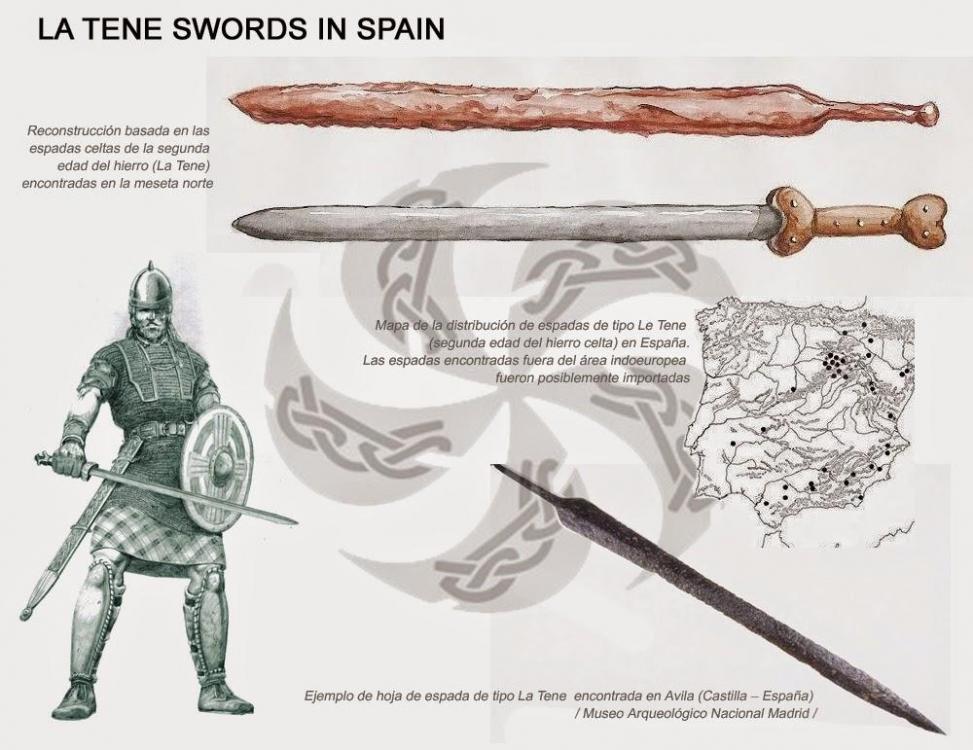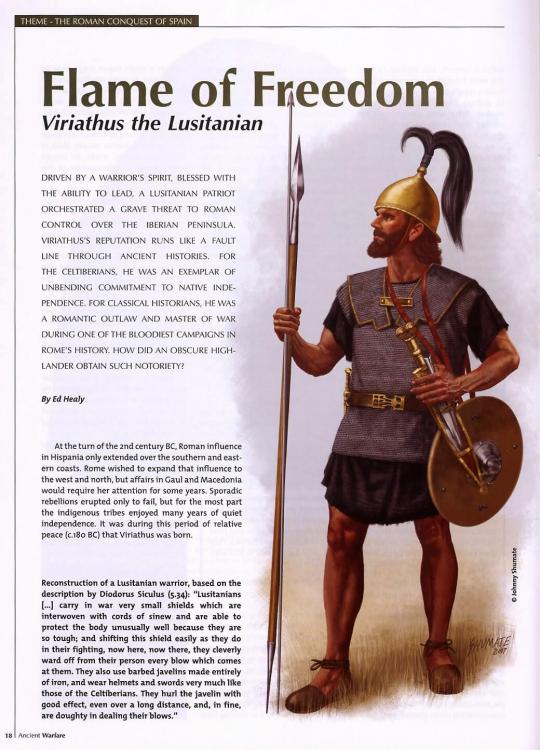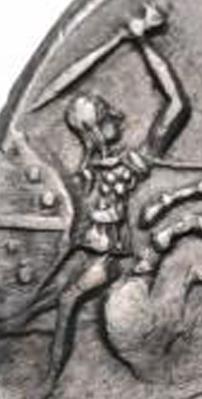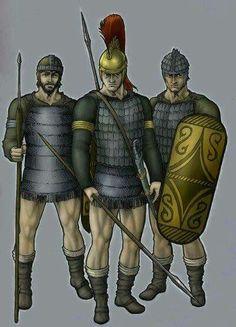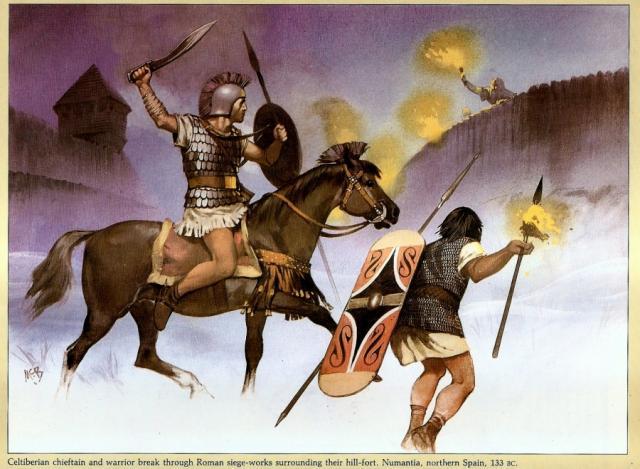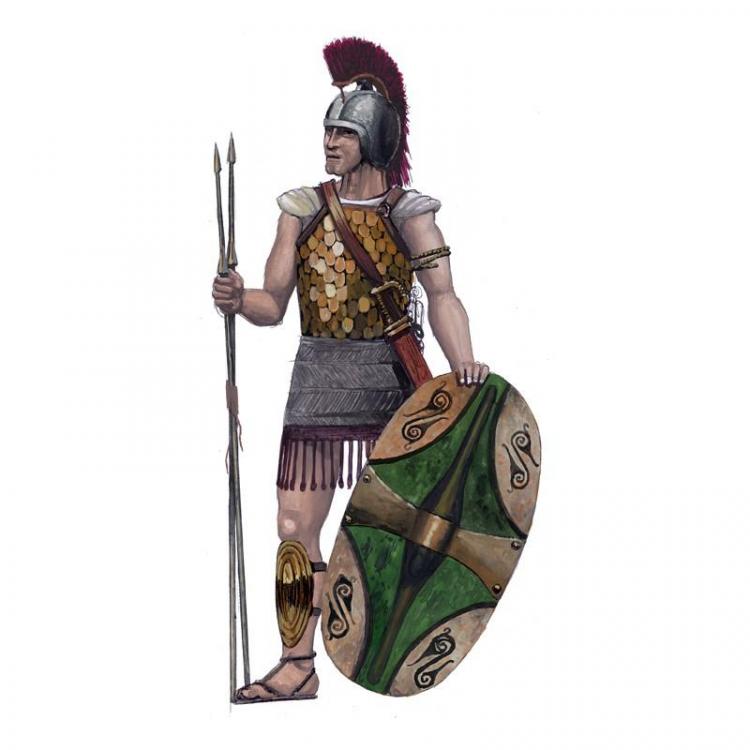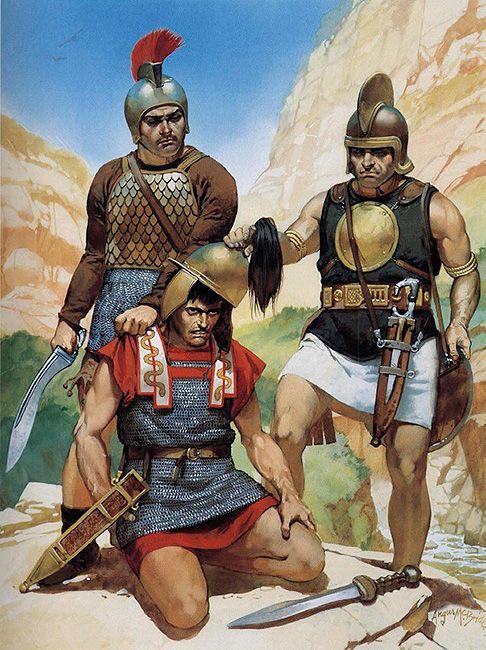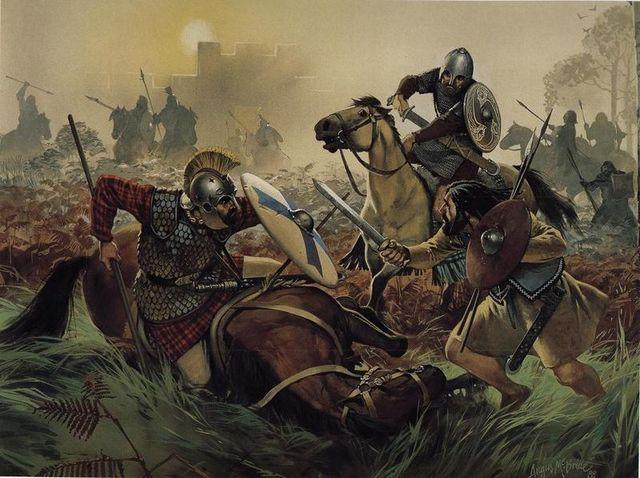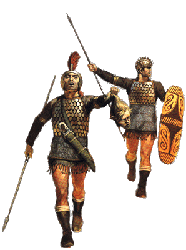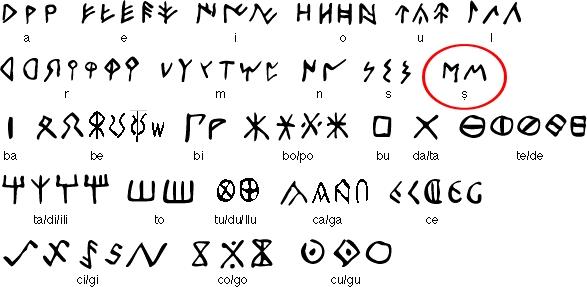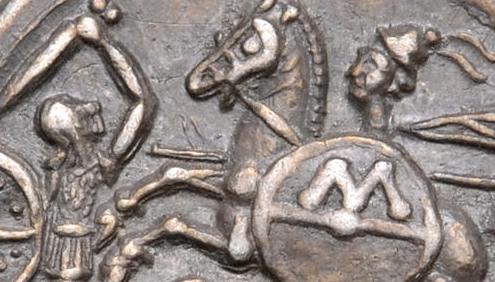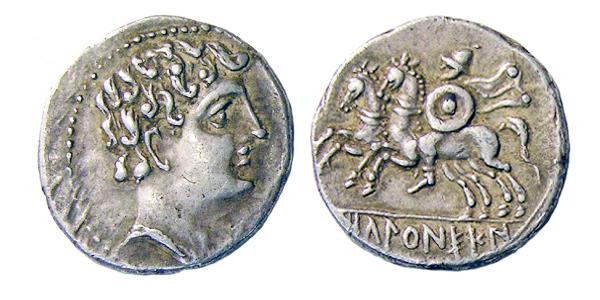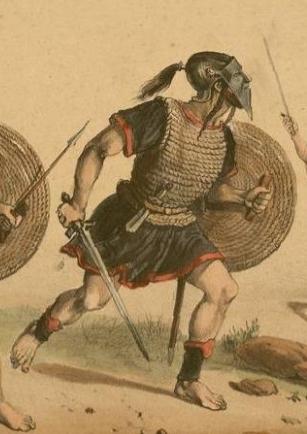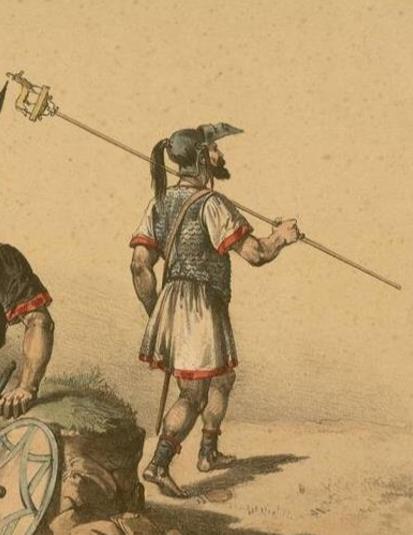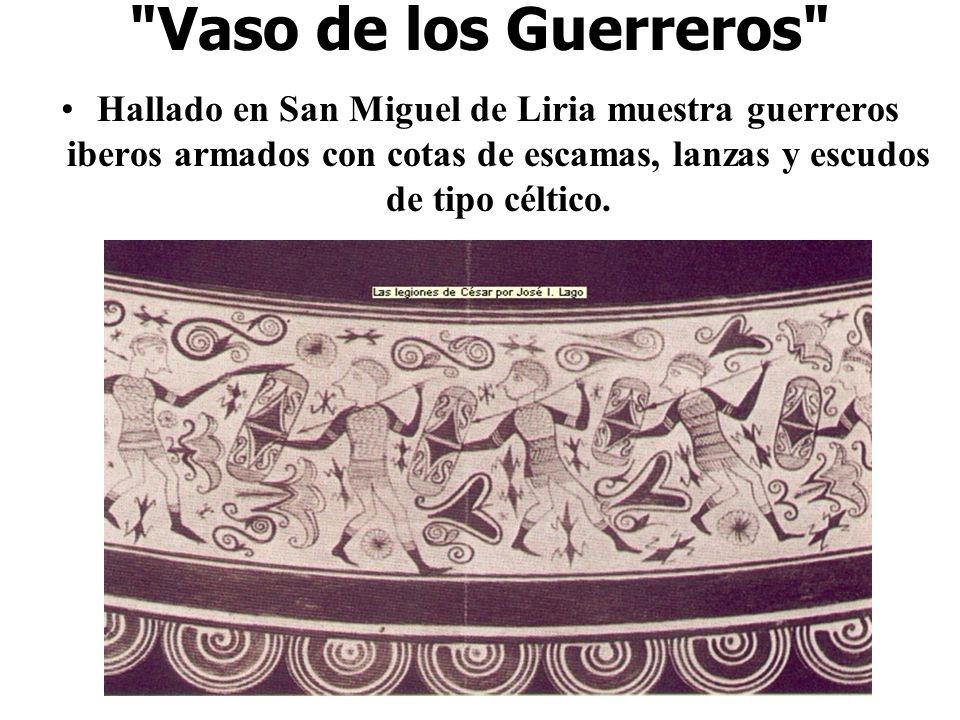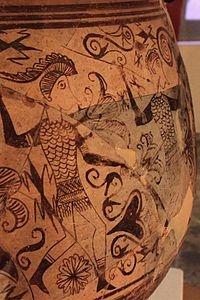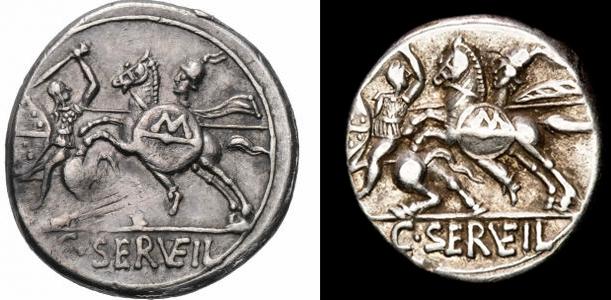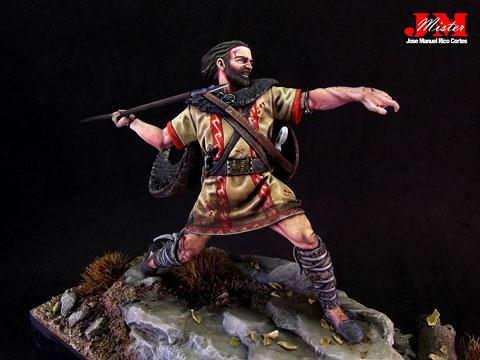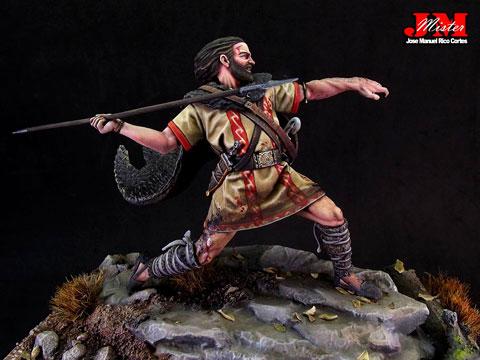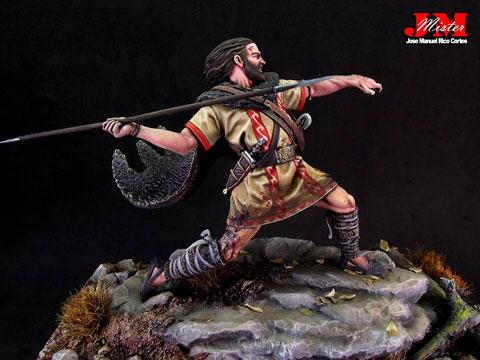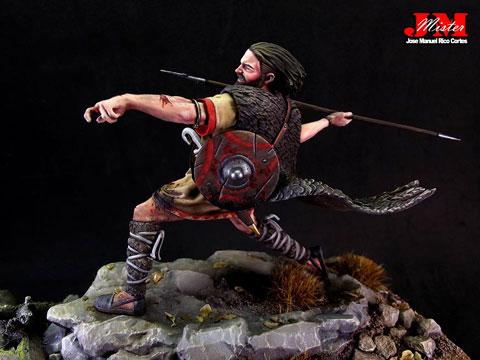-
Posts
64 -
Joined
-
Last visited
-
Days Won
4
Everything posted by Ardworix
-
The troops that attack and use fire dards are from Pompey who had already attacked, previously: The episode of the Lusitanians brothers who desert, comes from these troops of Pompey, of which they even report a speech.... Furthermore, Pompey's troops were not formed exclusively by Turdetans/Béticas... as the episode of the Lusitanians brothers expressly demonstrates. Juan José Sayas Abengochea, at one point, dealing with the composition of Pompey's forces, says: And for a change….again, what has become customary, you misrepresent my points. I said and I repeat that I could use heavy helmets and armor in phase 3....!!!! Which alone would make these units minority, before phase 1 and 2 composed of light troops. From what I see, you are problematic, disruptive, and it seems that your ultimate purpose is to riot to touch your whims. Anyway I just gave suggestions, do as you see fit. We no longer have anything to talk about and I close my participation. Have a good time!
-
From the beginning, the presence of Lusitanians, as mercenaries, has been reported, although it gained greater prominence with Philo's request for help from the Lusitanian Cecilius Niger. Keep trying to cover up your ill will with the heavy army of the Lusitanians.
-
No reason, as always .....! All this ill will, inventing theories, oddities, by the way, to avoid heavy armor by the Lusitanians, when with Sertorius they were frankly used.
-
A quick timeline for being aware... 1. Lusitanian War (155 BC and 146 BC) 2. Campaign of Decimus Iúnius Brutus against the Galaic (138-136 BC) 3. Sertorian War (80 BC 72 BC) 4. Second Civil War of the Republic of Rome, also known as: Civil War Caesarian (49 BC and 45 BC) 5. Cantabrian Wars (29 BC - 19 BC) Buccula and bipenne are registered in the Astur-Cantabrica war, which involved a broad alliance of tribes from the Minho, Portugal to Cantabria. As well as this period, the design of the caetras that was listed for being printed in the Lusitanian faction is from this period. In other words... a period on the threshold that the game is about. The use of flaming darts, which currently figure in the Iberian faction, are recorded in the course of the Cesarean Civil War that took place in Hispania, and whose protagonists, once again, are the Lusitanians. before the Cantabrian War. And the period of the War of Sertorius, prior to these retro-cited events, which was greater in magnitude than that of Viriato, and in which all military resources were fully developed, including naval battles... will it pass unnoticed? If with Viriato the infantry and heavy cavalry were few, still, surely there should be an amount to make its existence possible, with Sertorius it is widely employed.
-
O ARMAMENTO DOS LUSITANOS NAS CAMPANHAS DE VIRIATO - Miguel Sanches de Baêna Caderno 9 - Terras Quentes - Exército (doczz.com.br) pg. 44 - 109 of PDF. Write an article saying this to Blázquez... that he is mixing Iberians, Celtiberians and Lusitanians.....
-
You like to distort as it suits you.... Strabo's quote rejects the fallacy that heavy armor would be almost non-existent. If that were the case, there would be no heavy army as Strabon expressly reports about the Lusitanians. This "expert", to justify the obvious representation of the squamat loric on the Sant Miguel vases, suggests laughable "cloth armor". No surprise, I've seen "experts" interpret the heads of wolves that figure on the breastplate as "lion". Still on the various representations in ceramics, they are reputedly considered Celtiberian and Lusitanians: On the other hand, I quoted former Portuguese diplomat Miguel Sanches Baêma, a specialist in Military History, and who, more than a historian and interpreter, reproduced the weaponry with the techniques of the time. But what counts is his opinion. And the innovations that come in your mind.
-
Now, squamat loric is not plausible because you don't want to...
-
The images are merely illustrative regarding the use of the buccula and the bipene (the ones I posted, not yours).... unless you also want to make a case for the use of both, as to date, there has not been a single physical archaeological find of the two pieces.
-
Ciertamente, pero en un número que permite la formación de un ejército pesado (infantería y caballería), de lo contrario, el historial de Estrabón no tendría sentido, si fuera como algunos afirman "casi inexistente" ....... "También celebran concursos, para soldados y caballería con armas ligeras y pesadas, de boxeo, carreras, escaramuzas y combates por escuadrones". - Strabon. De modo que, apareciendo en la fase 3, ya serían pocos por sí mismos, constituyendo una mayoría (derivada de las fases 1 y 2) tropas ligeras, reproduciendo fielmente las fuentes clásicas. Permítanme reproducir una exégesis, del ex diplomático portugués Miguel Sanches Baêma, especialista en Historia Militar, que corrobora algunos puntos ya planteados, a continuación en portugués, creo que comprenda: En cuanto a las pezuñas, creo que en la fase 1 se podrían ir sin pezuñas, usando el vendaje alrededor de la frente y el cabello, como se representa actualmente en algunos honderos de la civilización ibérica, en la fase 2 creo que se podrían usar pezuñas de cuero y que hay varios modelos, en la fase 3, como ya he comentado, creo que se podrían usar cascos de bronce (montifortinos y calcidicos) aunque también se podrían mezclar con los de cuero si le place. En cuanto al atuendo de infantería o caballería ligera, sugeriría la reproducción del traje de un preso gallego representado en el Arco Romano de Carpentras, sur de Francia: La figura en cuestión es la de la derecha, con un casco de Montifortino colgando arriba y una falcata a sus pies. (ver: http://www.manuelgago.org/blog/2017/12/11/o-guerreiro-perdido/) En cuanto a máscaras y bipenes, se hace referencia a las monedas que conmemoran la victoria romana en la guerra cántabra, en época de Augusto, además de las reproducciones artísticas de la historia militar:
-
I believe that I was the one who made the most references here, an unfair accusation. I'm not the one with innovations, those, yes, that become a mess...
-
Read the beginning of the topic.... the Iberian peninsula is divided into three areas, the Iberian properly (Mediterranean coast), the Celtiberic, and the Celtic. The Lusitanians are included in the Celtic. And the classic authors, make reference that the Celtiberians and Lusitanian used the same weapons. The current Iberian civilization, mixes the three, the buildings are Celtiberian, and mix Celtiberian and Iberian units.... Lusitanian, there are only the darts. Still, somewhat characterless. The current Iberian civilization is defensive, possibly inspired by the Roman siege of Numantia. This was not the war tactic of the Lusitanians, who were notable for their warrior nomadism. In addition, as I said, the major war events that took place in the Iberian Peninsula, BC, were carried out by the Lusitanians with Viriato and Sertório. And once again, I think it would be a huge gap, not being Sertorio among the Lusitanians, it would be a natural evolution in the Lusitanian game mode. As for scale armor, I have repeatedly cited liria pottery, as well as Strabon's express mention of the use of heavy army by the Lusitanians. And once again, I don't know why the surprise, the previous versions itself, and I'm mistaken, the current one also correlates scale armor. Now... if you have new theses about it, as I said, write a scientific article and defend it academically. Untimely to weave innovations here.
-
Las unidades de infantería, con sus subdivisiones: espadachines, piqueros y dardos, en su fase 3 creo que ya podían hacer uso de cascos de bronce (montifortinos y calcidico), además de cota de malla y armaduras de escamas. Las unidades actuales de los Ibericos, en el modo actual 25, en su tercera fase ya hacen uso del casco calcídico, y en el modo de los juegos anteriores 24, 23, etc ... la infantería piquera ya hizo uso de armadura escalada . En la fase 2, podría utilizar armadura de linotórax, con cascos de cuero. Recuerdo que los modos anteriores 24, 23 ... tenían una buena variedad de cascos de cuero. A menos que me equivoque, la infantería espadachín actual, en su fase 3, todavía usa casco de cuero. En la fase 1, infantería, ropa ligera. En cuanto a las Unidades Campeones, podían utilizar completamente la armadura pesada, incluido el uso de bucculas (máscaras). Especialmente en caballería. Además del uso de bucculas, el uso de bipene (hacha de doble filo). Creo que también sería interesante hacer uso de la espada tipo "la tene" (espada larga/lejos), plenamente documentada arqueológicamente, por la infantería en general, además de las tradicionales gladius hispaniensis y falcatas. La espada de la tene, ya tiene en los Britones, basta agregar. Recuerda también que las capas no solo estaban hechas de pelo de cabra, sino también de lana. Hay capas negras en otras unidades del juego ya hechas, sería suficiente agregar.
-
Specifically regarding the coin, you convinced me to be a Thracian, the sword really seems to me to be of Thracian origin and not a gladius hispaniensis as I said. Anyway, we have a "barbarian" dressed in a 127 BC loric squamata. Which corroborates the heart of all this quarrel, the loric predates the Romans. Yet this point is a paltry mention of how many others have already been made and ignored.... And back to the main point, almost celtic people have a registered of the use of loric squamata, but according to the article you cover, the Lusitanians and Celtiberics do not! Making assertions bluntly contrary to classical authors. In addition to the express representation in Celtiberian ceramics... and therefore widely represented in the historical portrayals of Celtiberian and Lusitanian warriors. I don't understand why polemic about this.
-
A "thracian", which makes use of a gladius hispaniensis... it's an evolution, for those who said there was no barbarian. "Roman" auxiliary troops in Britannia were essentially "Iberian". It is not by chance that they used lSquamat loric, as the use of will be repeated in all events after the incorporation of "Iberian" bodies into the Roman army. Lusitanians and Celtiberians, like the Cantabrians, Galaics, etc... used the same weapons... The thesis that you encompass as almost non-existent the use of mail coat.... however, once again, Estrabon mentions the use by Lusitanians of both light and heavy armed: "You really think the bottom part is a chain mail?" The upper part yes, without a shadow of a doubt.... and I repeat what I said initially, I'm not the one with innovations, if not you. Nothing I have exposed here is new. So much so that they are reproduced by all those who portrayed the Lusitanians and Celtiberians.
-
Your own reference says "it is in any case clear"..... the other coins feature other representations that are not Roman either, or at least not just roman, as you yourself mention. As for not seeing, or ignoring, the figure of a "barbarian" in the representation on the left, we see that someone has problems with their eyes.... of all sorts, even if they ignore everything that has already been said, specifically about the currency in question . Liria's ceramics are even clearer. Although, in all tribes of Celtic origin, scale armor is registered, but in the Celtiberians and Lusitanians they are not.... they are some kind of cloth armor. The reference you make: It expressly contradicts Estrabon, as I've already said, but you completely ignore it. Between Estrabon and these "exotic" theses, to say the least, I take Estrabon. or.... let's figure the Celtiberians and Lusitanians no longer with lorica squamatas, but with some kind of cloth armor... !
-
The type of coin in question is not a single period and theme.... Imagination is seeing a Latin "M" in a knight wearing a mask.... did the Romans already wear a mask in their cavalry 127 BC?! Like the other knight, wearing a loric squamata, which will only come to be used by the "Romans", in the imperial period, almost 2 centuries later! Yet by auxiliary troops, read: iberians (lusitanians, celtiberians, cantabrians, etc...). Celtiberian coin, displaying the same letter, celtiberic, "M":
-
I know that the fragments of the portico in question, are found in Rome.... it does not contradict that the weapons presented are in reference to the Roman conquests. And I reiterate, they are dated from the Augustus period, with the considerations I have already explained above. As for the reference to currency, there are others, with different dates and themes, the one I referred to is from the year 127 BC. , original from Hispania/Iberia, which clearly depicts two local knights. That once again, as I explained above, a double-edged sword, using side braids, and therefore scale armor (it is hardly credible for someone to hypothesize that it is a knight from other parts), the other knight, sporting on his shield a Celtiberic letter (M), as by itself, clearly indicates its origin, as it also makes use of a buccula (mask) and Montfortino helmet, as later coins from the Augustus period in allusion to the Cantabrian Wars will portray. The image of this second knight is also repeated in other coins of Celtiberian origin, which reinforces that it is a Hispanic knight. coin | British Museum About some points that you report, it seems to me to be an elucubration that contradicts the express mentions of the classic authors, corroborated in the ceramics of Liria. Diodorus Siculus expressly says that the Lusitanians used coats of mail....! In any case, if anyone is willing to theorize new interpretations of Liria pottery, good luck! I suggest to write a scientific article about it and hold academic conferences on your theses. For now, let us base ourselves on what is consensus. And once again, so as not to miss the nerve-racking point at hand, the squamata loric, whether or not of Roman origin, was demonstrably used by the Celtiberians.
-
Before, to be clear, I'm not talking about anything new. Archaeologists and historians, such as Conde de Clonard, in his work "Album de la Infanteria Española" of 1861.... in this way he already portrayed the "lusitanians" (Celtiberians and turdetanos). Clonard's main source, as well as that of other historians and archaeologists, to portray the Lusitanians, Celtiberians, Cantabrians, as I mentioned earlier, are the records on Roman coins depicting warriors and weapons used by them, in addition, of course, to classical texts. The "recent" archaeological discoveries, such as Celtic ceramics, statuary, ex vows, etc... are also important sources, and that corroborate others, for the representation of Celtiberian clothing and by desideratum of the Lusitanians, since they use the same weapons and costumes. Here are the images that follow representations expressed, in Celtiberian ceramics, of warriors wearing scale armor: Even more expressed, in particular the Lusitanians use of the lorica scale, is a coin from Servilia dated to the year 127 BC, which depicts the fight between two knights. The use of a double-edged sword, of the "antenna" type, denounces that he is a warrior from the Celtic area of Iberia. Even more representative in this are the traditional side braids, and wearing scale armor: As for the squamata loric being of Roman origin or not, I maintain that it is of Celtic origin. In any case, ad argumentandum tantum, even though it was of Roman origin, its use by the Lusitanian and the Celtiberians has been proven, as is the case with linothorax (this one, yes, of Mediterranean origin). The portico I referred to, as far as I remember, is from the Augustus period, in reference to the victory in the Cantabra War, and for that reason it bears weapons, such as the caetra, and the gladius hispaniensis, undoubtedly of Galaic origin, other weapons are in reference to other conquests, and that can correlate the squamata loric among which, it is a possibility.... as well as galaic, it is something that cannot be discarded. Even though it is the victory of another people, it denounces and corroborates, once again, that the squamata loric is not of Roman origin, but of Celtic origin.
-
Si, bueno, pero, colocaría como la 3a fase, guerreros doblando armaduras más pesadas, como la malla quota y la lorica squamata, bien como cascos de bronce (montfortinos y calcídico celtibérico). Otro bueno modelo es este: Una observación personal que noto es que muchas de las representaciones, en términos de apariencia, retratan a los lusitanos con barbas, pero los pocos hallazgos arqueológicos, registran a los lusitanos con bigotes, trenzas laterales y cabello largo.
-
Some models based on the Cantabra War. Several references to the weapons and costumes used by the Lusitanians comes from coins commemorating the Augustus period referring to the Roman victory over the Cantabrians, and that despite the name "cantabra", took over an alliance between Galaicos from the mouth of the Minho to today's Cantabria. This is also because, according to Estrabon, all the cimbros (Lusitanians, Galaicos and Cantabrios) were dressed in the same way and used the same weapons.
-
The textures are very beautiful, I imagine the work it took to make them. If you allow me, a few remarks.... regarding the tunics: Textura fase 2 infantería ligera; (túnica lusitana escaramuzador, espadachín, hondero, lancero, y de la caballería a distancia como caballería cuerpo a cuerpo). The skirts (or kilt), based on the statues called "Lusitanian warrior", are in checkerboard (or tartan) which was derived from looms, common to almost all peoples of Indo-European origin. I think it would also be important to consider Estrabon's express description of the Lusitanian people's way of dressing, he says: About it, also Diodorus Sciculus: I believe that linothorax is missing, such as the lorica saquamata, among the armor of the Lusitanians. As well as, I think that the coloring of the clothes as of the covers, in the textures, should be predominantly black. I also consider that leggings, leather or fur, should figure in the texture. I would also suggest putting the Torc on the neck, as virias (bracelets) in the textures, represented in the statues of the Lusitanian warriors: A good reference of a Lusitanian warrior wearing linothorax is the archaeological find in the Municipality of Bande, of what would be a chess piece, in it besides the linothorax, the Lusitanian warrior wears a montfortino helmet, and fur gaiters, and cape. Also interesting to note the traditional side braids of hair and mustache: Other good image references are those of the Galician archaeologist and historian André Pena Graña:
-
I suggest that it is among the three heroes: Cauceno, Viriato and Sertorius. Caucene, because he did the feat of crossing the columns of Hercules, and attacking the Romans at their base in North Africa. What did denotes a certain naval mastery of Lusitanian. About it, says Apiano: Viriato for obvious reasons which I won't elaborate on. Especially, I think it would be interesting to add Sertorius as the third hero of the lusitanian faction. In spite of being of Roman origin. Sertório was certainly, after Viriato, the greatest "general" who led the lusitanian in a war as intense or more intense than the one waged by Viriato. There was a moment when the Romans mobilized 130 thousand men against the Portuguese of Sertorius. This also implies an increase in the gameplay of the Lusitanian faction. This is because, with Sertorius, it is mentioned by Plutarch that Sertorius' troops created a naval flotilla, siege weapons and other weapons, previously only used by the Romans. In other words, the Lusitanian faction could have available weapons already available in the Roman faction. Finally, I think, that Roman weapons could be made available to the Lusitanians in the third and last phase of development.
-
Yes, I talk about it at the beginning of the topic. There is a Roman mural depicting the spoils of war, alluding to the end of the war in the Iberian Northwest, where we can see the weapons used. The scamatta lorica appears to have been originally of use of the Lusitanians, and later copied by the Romans as the "glaudius hispaniensis". The use of crimson color, the Roman army wore gray, when the invasion of the Iberian. The "salutatio iberika" was also copied by the Romans. Shield called by romans caetra, probably name lusitanian "Ataga" with "kladiwos"/sword. lorica squamatta
-
I contemplated the Lusitanian faction, which Sertório figure up from the Lusitanian heroes. Sertorius was a Roman general who led the so-called war sertoriana the front of the Lusitanian. Sertório, was exiled in North Africa, with the death of Viriato, the Lusitanian rescued so that liderassem in the liberation of lusitania the Roman judge. Sertório then organized the earlier Lusitanian hordes in the Roman army formations, did build a naval squadron, endowed them with siege weapons and so dominated the whole Iberian. But it ended up having the same fate as Viriato, when was murdered at a banquet. I would have been able to sweep the Roman occupation of the Iberian. So with the choice of Sertório as hero, the Lusitanian faction could be provided with improvements turtle formations, siege weapons, warships, etc ... Now, if disposal, creating new factions. I think we could do something similar, even within the Iberian faction when choosing Viriato as hero. It might i to create an elite corps made available with the choice of hero Viriato, the "devotio", a body of sworn officers to give their lives for their boss. I do not know if it would be feasible biggest changes as the costumes, structures, etc ... for greater lusitanization the Iberian faction to choose the hero Viriato
-
The Lusitanians Sanctuaries The Lusitanians held their religious ceremonies in rupestres "sanctuaries" in the hills, called "croio teutático". Strabon reports that: "The Lusitanian often sacrifice to the gods, examine the entrails without the boot of the body of the victims, also observe the chest veins, and also take certain indications by simple probing. Even Consult in some cases human entrails, serving up to that of pows, previously lining the sagum ([xvii]) to the sacrifice, and when the victim falls to the open womb by the hand of arúspice ([xviii]) take the first omen of own downfall of the body. often also cut the right hand to the captives and offer it to the gods. " Croio Teutático


